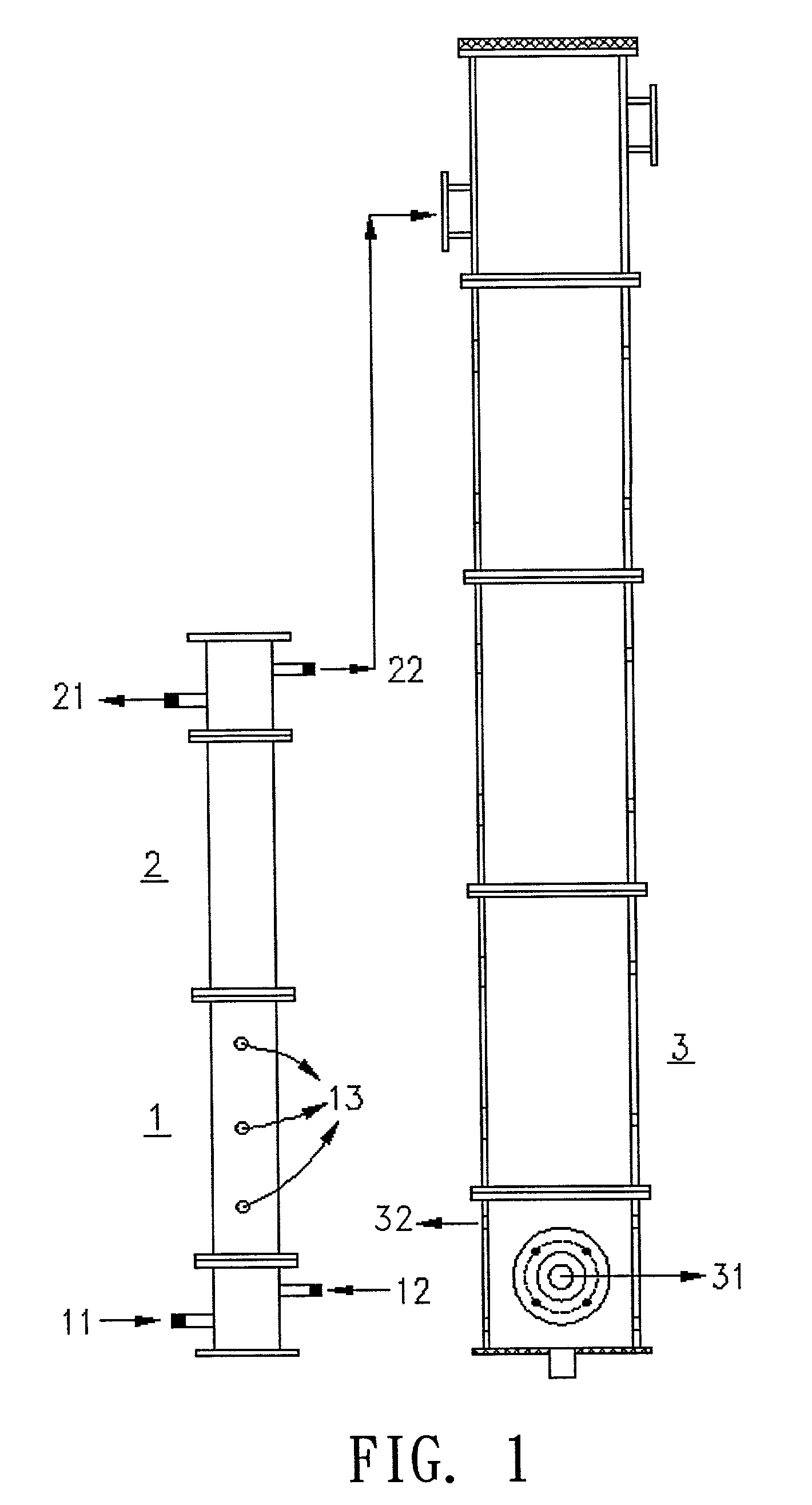Method for processing alkene-containing exhaust gas
a technology of exhaust gas and alkene, which is applied in the direction of hydrogen sulfide, separation processes, copper compounds, etc., can solve the problems of large amount of fuel, large equipment size, and high operation cos
- Summary
- Abstract
- Description
- Claims
- Application Information
AI Technical Summary
Problems solved by technology
Method used
Image
Examples
Embodiment Construction
[0026] 1.sup.ST Embodiment
[0027] Exhaust gas containing styrene, norbornene and butyl acrylate was used in this embodiment. The inlet concentration of ozone was 110 ppmv. The ozone in the tail gas has been decomposed by flow through a compost compartment that was 20 cm height in 3 sec of contact time, before entering the bio-filter. The concentration of ozone was reduced to below 1 ppmv. The concentration of above-described compounds before and after the process is listed in Table 1.
1 TABLE 1 Ozone process Biological process Concentr Concentr ation Reaction ation Reaction Pollutant (ppmv) time (s) Efficiency (ppmv) time (s) Efficiency styrene 150 1 99+% Norbornene 40 1 99+% Toluene 40 1 .about.0% 40 60 99+% Acetone 100 1 .about.0% 100 60 99+% Ethyl 16 3 10% Acrylate Butyl 13 3 64% Acrylate
[0028] 2.sup.nd Embodiment
[0029] Apart from processing a single pollutant (Norbornene), the operating condition is the same as that in the 1.sup.st Embodiment. The concentration before the process ...
PUM
| Property | Measurement | Unit |
|---|---|---|
| height | aaaaa | aaaaa |
| concentrations | aaaaa | aaaaa |
| concentration | aaaaa | aaaaa |
Abstract
Description
Claims
Application Information
 Login to View More
Login to View More - R&D
- Intellectual Property
- Life Sciences
- Materials
- Tech Scout
- Unparalleled Data Quality
- Higher Quality Content
- 60% Fewer Hallucinations
Browse by: Latest US Patents, China's latest patents, Technical Efficacy Thesaurus, Application Domain, Technology Topic, Popular Technical Reports.
© 2025 PatSnap. All rights reserved.Legal|Privacy policy|Modern Slavery Act Transparency Statement|Sitemap|About US| Contact US: help@patsnap.com



